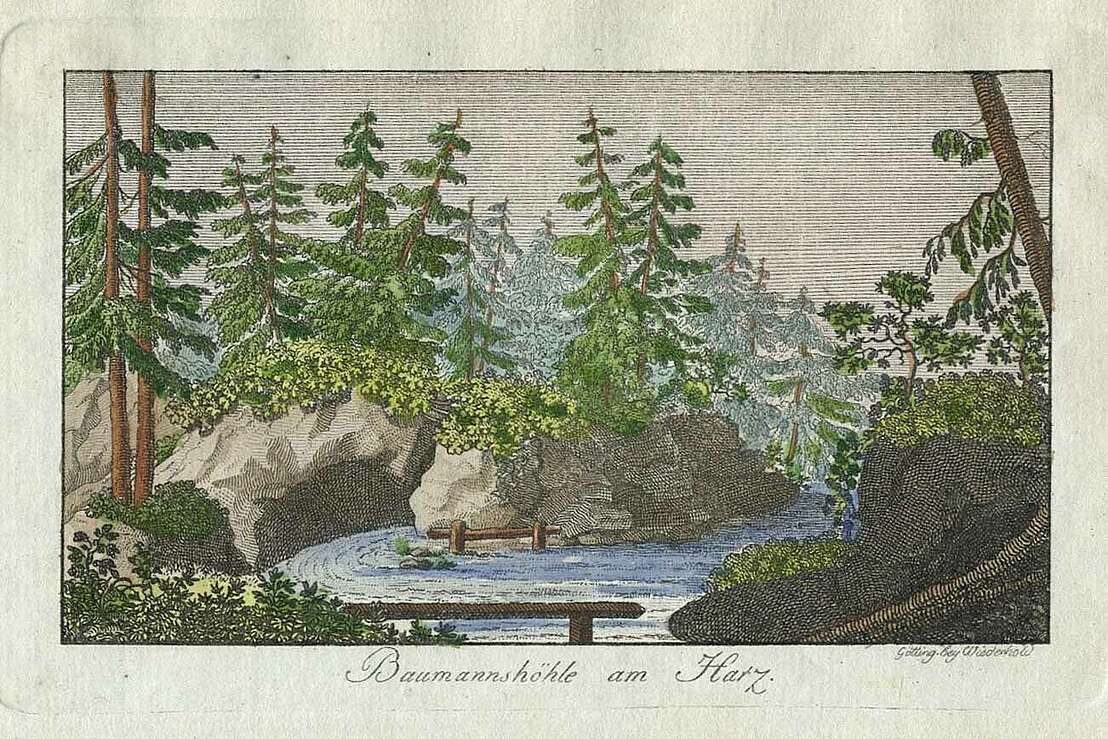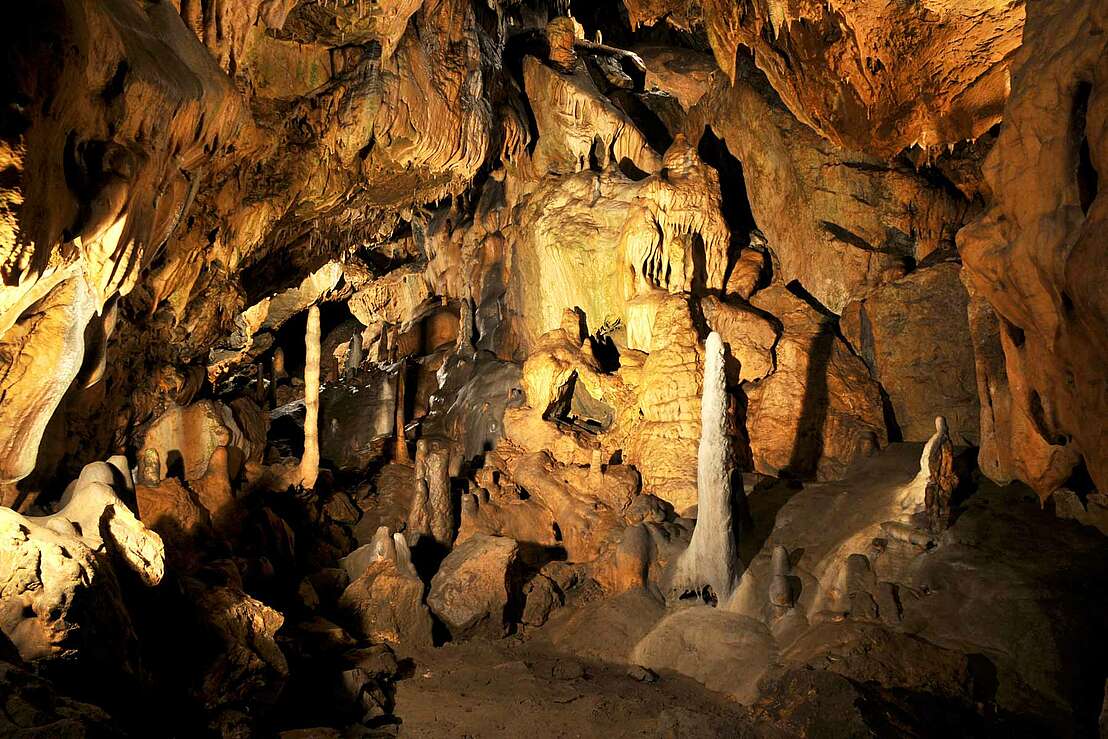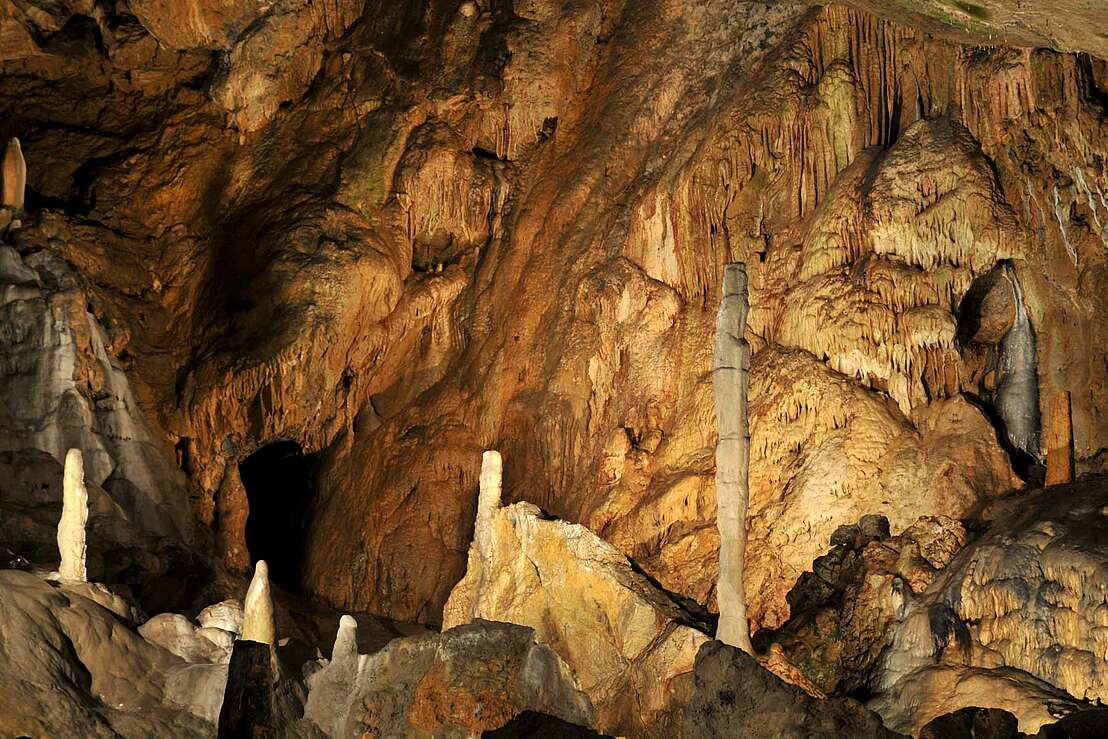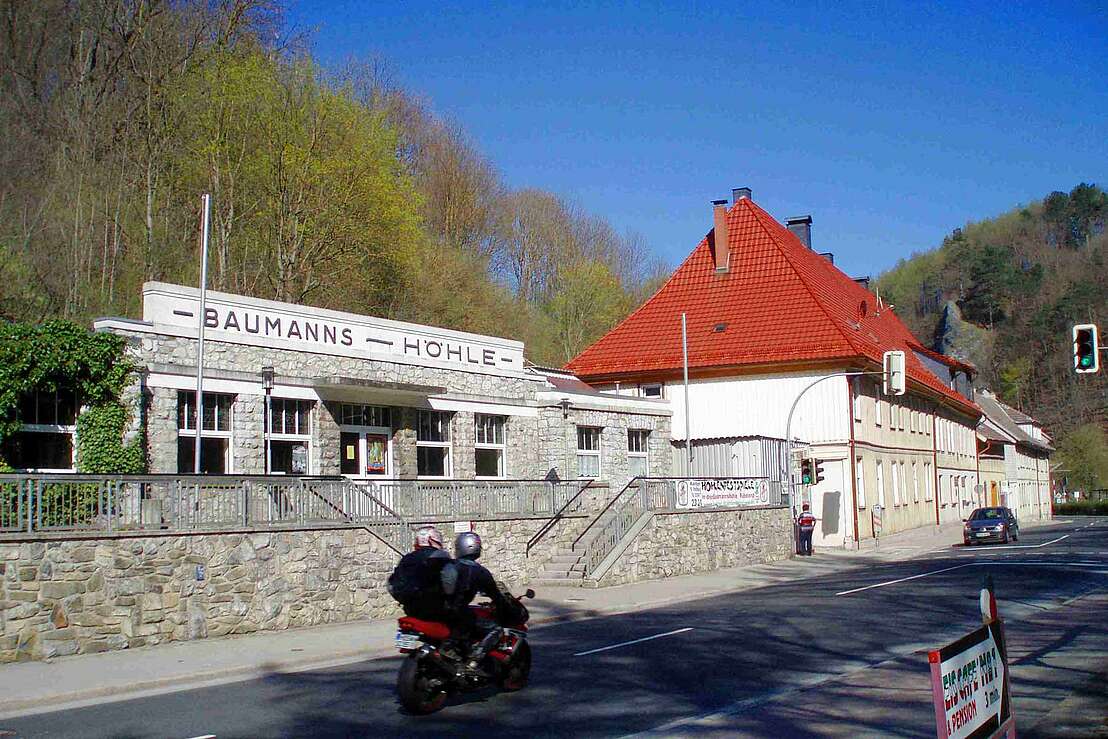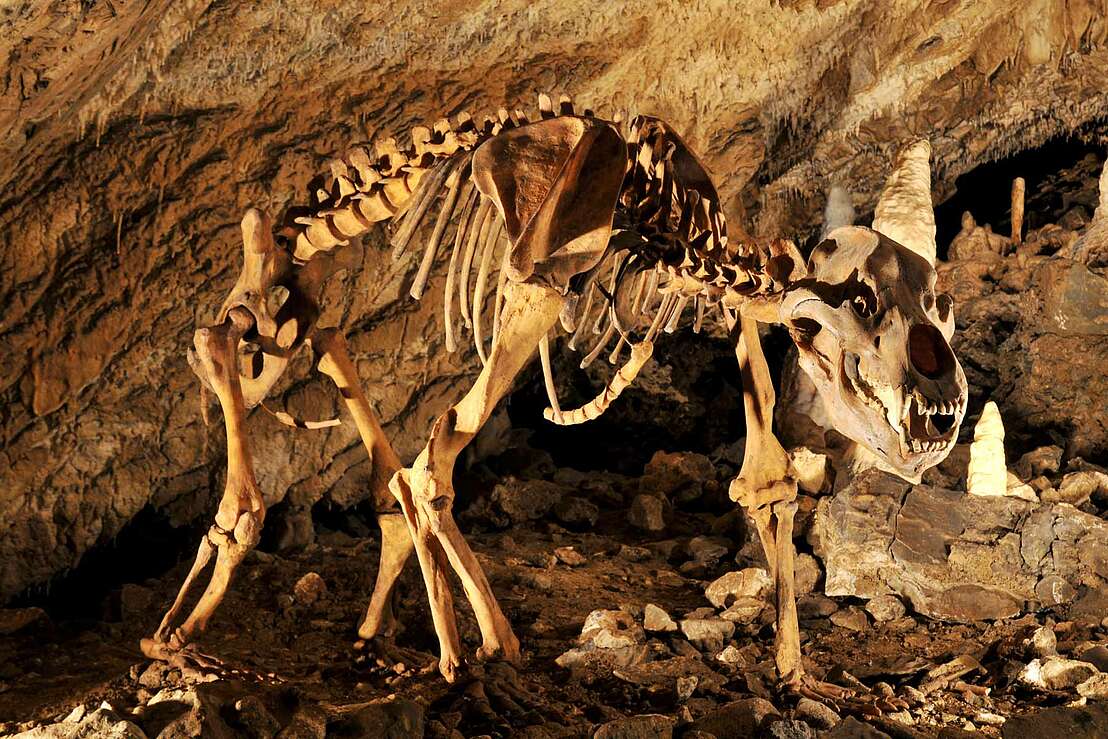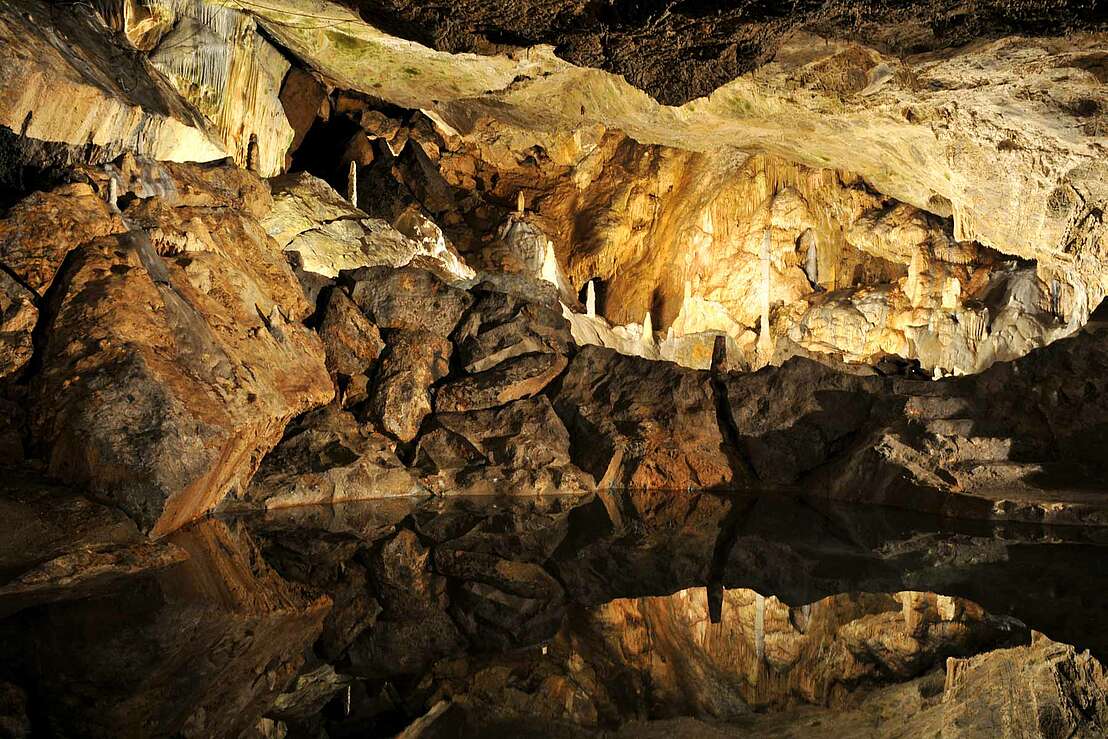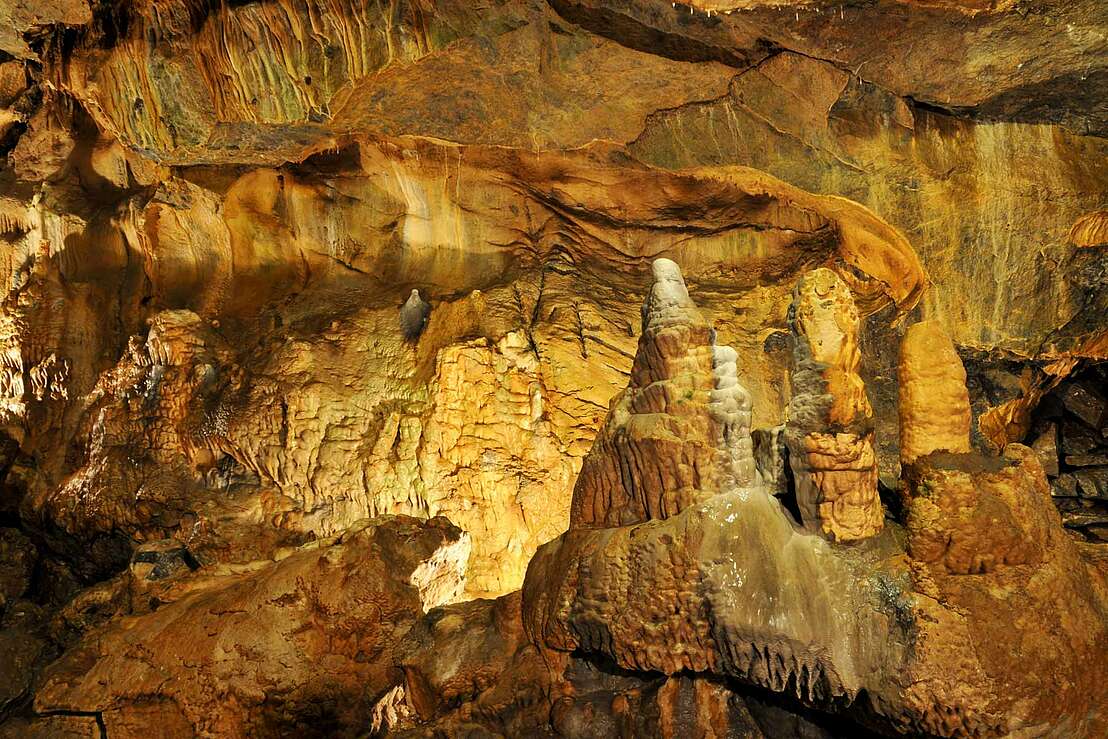Baumannshöhle
Germany's oldest show cave
Excursion destinationsHarzspots Vacation planner
| Name | Date |
|---|
The Baumannshöhle cave in Rübeland in the Harz Mountains is considered the oldest show cave in Germany and is located right next to the Hermannshöhle cave. Both caves are part of the Rübeland stalactite caves and can be visited by holidaymakers and tourists. Guided tours of the Baumannshöhle cave are offered every 20 minutes for groups of up to 40 people, providing an insight into the spectacular underground world of the natural show cave. The cave is characterised above all by its wealth of colourful stalactites and stalagmites, as well as the Goethesaal, the largest cave, which, with its underground natural stage, is a unique venue for theatre performances, concerts and even weddings. Thanks to its size of 300 m², which is open to the public, it can accommodate up to 300 guests in total. This hall is also home to the so-called Wolfgangsee, an artificial pond with a maximum depth of 0.8 metres and a water temperature of around 9 degrees, in which water seeps down.
Good to know
Dogs are not allowed in Baumann's Cave, nor is photography permitted, as the cave is a natural habitat for bats and the rare cave olm and the territorial behaviour of dogs and the taking of photos can be a disturbance factor for the animals living in the cave. Tickets can also be purchased both online and at the box office. If your stomach is rumbling before or after a visit to Baumann's Cave, there are several small pubs and restaurants in the surrounding Rübeland region or you can help yourself to hot and cold drinks from the vending machines in the cave reception buildings.
Origin and history of the Baumannshöhle cave
The formation of Baumann's Cave dates back to the Devonian period, an epoch around 419.2 to 358.9 million years ago, long before the dinosaurs once populated the earth in the Triassic period (251.9 million years - 201.3 million years ago). It was formed by the erosion of Devonian limestone by water. To this day, as the name "dripstone cave" implies, water drips through the perforated limestone ceilings, forming stalagmites (dripstones growing from the floor), stalactites (dripstones growing from the ceiling) and stalagnates or sinter columns (dripstones that have grown together) due to the limestone contained in the water. Numerous finds of bones, pottery shards and even stone tools testify to the fact that the cave was once actively used by our ancestors in prehistoric times. The finds date back to the Neolithic period, which began between 5,800 and 4,000 BC.
In 1649, the Baumann Cave opened to visitors for the first time, as Valentin Wagner from Rübeland was authorised to offer guided tours. In 1668, Duke Rudolf-August of Braunschweig-Wolfenbüttel finally introduced measures to protect the cave, as it had already been heavily utilised at the time by people taking stalactites as souvenirs. Thanks to this, the cave was recognised as the first legally protected natural monument in Germany.
Even the installation of a door in 1688 did not stop visitors from entering at will. Even famous personalities such as the theologian Gottfried Olearius, the scientist and philosopher Gottfried Wilhelm Leibniz and finally Johann Wolfgang von Goethe visited the Baumann Cave. Goethe even visited the cave three times in 1777, 1783 and 1784, which made him the namesake of today's Goethe Hall from 1928 onwards. The cave eventually became more and more famous, making it a popular destination for tourists and holidaymakers and ensuring that it became an important economic factor in Rübeland.
The legend of Baumann's Cave
According to legend, the miner Friedrich Baumann discovered the cave by chance in 1536 when he was looking for an ore deposit. During his search, however, the mine light went out, forcing him to wander through the darkness of the cave for three days. The emaciated miner finally discovered a small ray of light and collapsed, whereupon his friends found him and took him to his mother. There he told his mother about his discovery, but died a few days later.
Visitor information
Regardless of the season, the temperature in Baumann's Cave is a relatively constant 8 degrees Celsius all year round. Anyone visiting the cave should therefore be prepared for the cool temperatures and ideally bring a jacket and sturdy shoes. If you would like to take part in a guided tour, you should also be prepared for a few steps, which means that the cave is not barrier-free and cannot be accessed with a pushchair. There are car parks for buses, cars and caravans in the immediate vicinity of the caves. However, visitors should allow sufficient time to find a parking space, go to the toilet or wait at the entrance.
Harzspots gives you the
Komoot Harz Region Package for free!
Use our voucher from the Outdoor Navigators Komoot and get the „"Harz Regions Package“ free of charge. From now on you can get to know all hiking and cycling routes digitally and, if you wish, also voice-guided!
 Rating
Rating Rezensionen
Rezensionen
